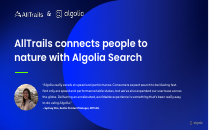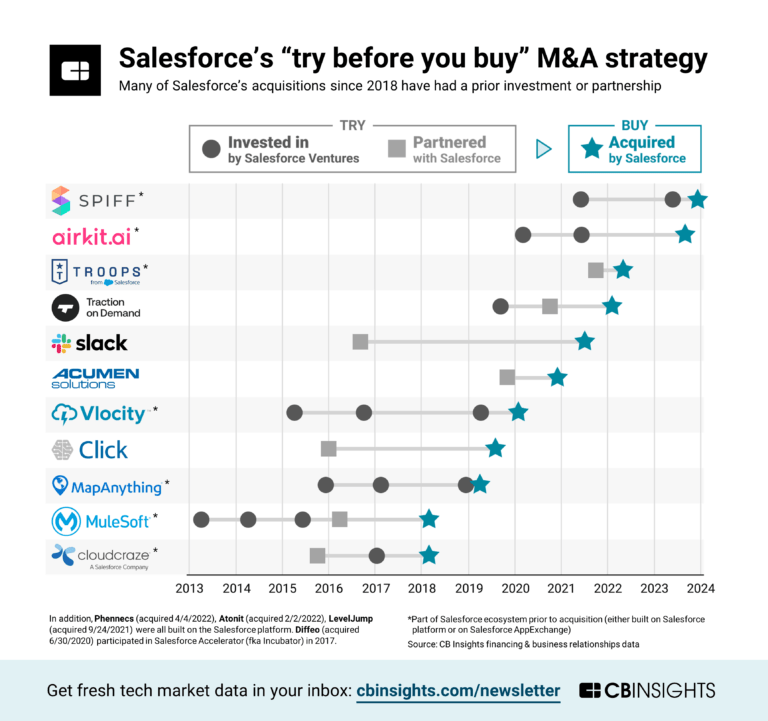
Algolia
Founded Year
2012Stage
Secondary Market | AliveTotal Raised
$334.34MLast Raised
$1.33M | 3 yrs agoRevenue
$0000Mosaic Score The Mosaic Score is an algorithm that measures the overall financial health and market potential of private companies.
-56 points in the past 30 days
About Algolia
Algolia operates as an end-to-end artificial intelligence (AI) search and discovery platform in the technology sector. It offers a suite of search solutions that leverage natural language processing and vector search technology to deliver relevant search experiences across web, mobile, and voice-enabled devices. Algolia primarily serves sectors such as retail, e-commerce, business-to-business (B2B) electronic commerce, marketplaces, media, and Software as a Service(SaaS). It was founded in 2012 and is based in Palo Alto, California.
Loading...
Algolia's Product Videos


ESPs containing Algolia
The ESP matrix leverages data and analyst insight to identify and rank leading companies in a given technology landscape.
The insight engines market provides AI-powered platforms that combine search, machine learning, and natural language processing to help organizations discover patterns, extract knowledge, and generate actionable insights from structured and unstructured data. These solutions go beyond traditional keyword search by understanding context, user intent, and semantic relationships to deliver relevant i…
Algolia named as Leader among 14 other companies, including Glean, Expert.ai, and Squirro.
Algolia's Products & Differentiators
Algolia Search
Algolia Search is a fully-hosted, multi-tenant, hybrid search API, which can also be deployed as a single-tenant platform for larger clients. Algolia Search is the world's first and only API-First Search and Discovery platform with a hybrid search engine, which comprises both keyword and semantic search in a single API. This API platform is blazing fast, massively scalable, and, importantly, cost effective.
Loading...
Research containing Algolia
Get data-driven expert analysis from the CB Insights Intelligence Unit.
CB Insights Intelligence Analysts have mentioned Algolia in 4 CB Insights research briefs, most recently on Oct 17, 2024.

Oct 17, 2024
The generative AI for e-commerce market map

Aug 3, 2023
The generative AI in retail market mapExpert Collections containing Algolia
Expert Collections are analyst-curated lists that highlight the companies you need to know in the most important technology spaces.
Algolia is included in 14 Expert Collections, including Unicorns- Billion Dollar Startups.
Unicorns- Billion Dollar Startups
1,297 items
Grocery Retail Tech
831 items
Startups providing B2B solutions to grocery businesses to improve their store and omni-channel performance. Includes customer analytics platforms, in-store robots, predictive inventory management systems, online enablement for grocers and consumables retailers, and more.
AI 100 (All Winners 2018-2025)
99 items
Winners of CB Insights' annual AI 100, a list of the 100 most promising AI startups in the world.
Tech IPO Pipeline
825 items
Market Research & Consumer Insights
734 items
This collection is comprised of companies using tech to better identify emerging trends and improve product development. It also includes companies helping brands and retailers conduct market research to learn about target shoppers, like their preferences, habits, and behaviors.
Conference Exhibitors
5,302 items
Latest Algolia News
Oct 27, 2025
Instead of redirecting buyers to separate online stores, businesses are now connecting with them directly inside the content, chats and workflows they're already accessing—often before they even know they're ready to buy. From AI copilots that can complete transactions to real-time, context-aware nudges that guide decisions, the aim is to eliminate friction, anticipate customer needs and close the deal on the spot. Below, members of Forbes Technology Council share embedded commerce strategies that can unlock high-intent revenue streams—along with tips for effective implementation. 1. Activate A 24/7 ‘AI Co-Worker' An embedded commerce strategy with huge potential is a 24/7 “AI co-worker” on websites. Picture a fashion site: A visitor asks what to wear on a date. The AI suggests outfits, offers accessories, adds items to the cart and closes the purchase instantly. Start with seamless checkout, then scale with personalization to unlock new revenue. - Vivek Thomas AISensum 2. Weave Purchasing Options Into Popular Content The key to embedded commerce is creating experiences that naturally entice consumers to buy. For example, grocers are using GenAI to build tailored recipes for shoppers, allowing customers to purchase ingredients directly from the recipe. When products are woven into content experiences customers already enjoy, retailers turn interest into action, increase sales and unlock new revenue streams. - Bernadette Nixon Algolia Forbes Technology Council is an invitation-only community for world-class CIOs, CTOs and technology executives. Do I qualify? 3. Trigger The Display Of Product Ads Based On User Actions One strategy that works is embedded contextual commerce—depending on the action taken by the user, a targeted catalogue item or action is displayed. For example, a user searching for information about a vacation in Hawaii gets a contextual nudge to shop for clothes and accessories. Businesses can tap into the AI trend and expose their products using externalized APIs and multichannel platforms accessed via AI chat assistants (such as Perplexity). - Ashay Satav eBay 4. Embed Checkout In Unexpected (But Convenient) Places Think beyond shoppable posts. Embed checkout where no one expects it: in tutorials, FAQs, receipts and even error messages. Allow customers to purchase the part from the how-to guide, add accessories from the warranty email, or reorder via a QR code on the box. Surprise creates intent; one-tap pay converts it. - Darko Pavic Fiscal Solutions 5. Offer Upgrades And Exclusives In Your App Add in-app purchases for upgrades or exclusive features. Start small: Test with one high-value item; use QA to ensure a seamless, bug-free checkout; then scale based on user feedback. - Margarita Simonova ILoveMyQA 6. Provide A BNPL Option Partner with a “Buy Now, Pay Later” provider and embed the BNPL service directly into your checkout flow. This new service is not just an added feature; the company earns a commission on every approved loan. It can also smooth the customer journey—for example, a small business that's using a company's tool may need to upgrade its plan but is hesitant about incurring a large upfront cost. A BNPL option makes the upgrade possible. - Dr. Milan Kumar , ZF Commercial Vehicles 7. Become Indispensable To Your Customers One embedded commerce strategy is integrating technology so deeply it becomes indispensable to customers' operations—including their supply chain and critical workflows—creating recurring value. Quick tip: Start with a small pilot, measure impact, gather feedback and iterate to demonstrate irreplaceable value before scaling. - Russ Garcia Menlo MicroSystems 8. Structure Catalogs For AI Chat Discovery One powerful embedded commerce strategy is making your catalog discoverable in GPT-powered chats, where customers increasingly seek purchase recommendations. By structuring product data with schema markup and conversational FAQs—essentially, “SEO for AI”—businesses ensure they surface at the moment of intent, unlocking new revenue streams. - Srikrishna Jayaram , Walmart 9. Leverage Clean, Consistent Data To Engage In Content Or Community Platforms Embedding commerce into content or community platforms unlocks new revenue by meeting customers where they already engage. The key is using clean, consistent master data so products surface accurately and contextually. Start by ensuring data quality before scaling embedded touchpoints. - Lori Schafer Digital Wave Technology 10. Offer In-The-Moment Usage Upgrades When our customers hit usage limits, we present upgrade options directly in context—inside the app, or maybe through an account executive's email. Conversion rates with this strategy are four times higher than those achieved through traditional sales outreach, because we're solving pain at the moment of highest motivation. - Asad Khan LambdaTest Inc. 11. Ensure Customers Don't Have To Leave An Experience To Purchase One powerful strategy is embedding checkout directly within content—like articles, videos or apps—so customers can purchase without leaving the experience. This reduces friction and captures impulse buys. A quick tip: Start small by integrating a limited product set with clear analytics so you can test conversion lift and scale what works fastest. - Tannu Jiwnani , Microsoft 12. Offer Relevant Add-Ons Inside Non-Retail Apps A powerful embedded commerce play is contextual commerce—letting users buy relevant add-ons inside non-retail apps (like purchasing insurance in a travel app). The quick tip: Keep it hyper-relevant. Only surface offers tied to the user's immediate intent so it feels like a natural extension, not a sales pitch. - Shashank Chaurasia MooresLabAI 13. Embed Products In AEO And GEO Flows Embedded commerce today is siloed, making discovery costly. The next wave is agent-to-agent, where AI assistants transact for customers. Embed products into agent engine optimization and generative engine optimization flows, enabling contextual buying inside responses. Make catalogs machine-readable to enable ambient commerce and capture new streams, allowing cars, wearables and smart appliances to make purchases autonomously. - Gaurav Aggarwal WinWire 14. Participate In Partner Marketplaces My tip is to leverage partner marketplaces: Let other companies resell your product for a revenue share. When I was working at YouTube, we partnered with products that complemented our subscriptions. Build on a platform that handles different deal structures, test with your top three partners first to work out issues, and then scale fast. Set up win-win incentives like higher revenue shares for hitting volume targets. - Lalit Kundu Delty 15. Create AI-Driven Shoppable Videos Use AI-driven shoppable videos that personalize offers in real time. For example, a travel clip can instantly show flights from the viewer's city, with live prices, seat options and instant booking links, turning interest into action. Quick tip: Connect personalization and inventory APIs so each viewer sees relevant, in-stock deals, and run micro-segment A/B tests to refine conversions. - Arun Goyal Octal IT Solution LLP 16. Try Community-Triggered Commerce Let purchases surface inside peer groups—forums, Slack channels or community dashboards—so members can recommend add-ons, and include one-click embedded checkout to enable instant action. Pilot with a small, active community feature and track peer-influenced sales to refine before rolling the strategy out widely. - Jagadish Gokavarapu Wissen Infotech 17. Engage In Knowledge-As-Commerce Knowledge-as-commerce involves transforming educational touchpoints into revenue streams. Imagine an analytics dashboard where users can unlock premium insights, expert tips or interactive tutorials via embedded micro-purchases. My quick tip is to start with one “locked insight” in a high-traffic feature and measure adoption before expanding the library. - Cristian Randieri Intellisystem Technologies 18. Embed Subscription Layers In Existing Products Embedded subscription layers in existing products create predictable revenue. Transform one-time buyers into recurring customers. Offer a small discount for subscription commitment, but lead with convenience—auto-delivery, exclusive access or priority support. Start by identifying products customers already repurchase. The lifetime value increase is incredible when done right. - Marc Fischer Dogtown Media LLC 19. Let Your Biggest Customers Sell Your Product Everyone's embedding commerce outward. Embed it inward instead. Let your biggest customers sell your product inside their platforms and split the revenue. Start with whoever complains the most about missing features. They're already invested in making you better. - Ishaan Agarwal Square
Algolia Frequently Asked Questions (FAQ)
When was Algolia founded?
Algolia was founded in 2012.
Where is Algolia's headquarters?
Algolia's headquarters is located at 3790 El Camino Real, Palo Alto.
What is Algolia's latest funding round?
Algolia's latest funding round is Secondary Market.
How much did Algolia raise?
Algolia raised a total of $334.34M.
Who are the investors of Algolia?
Investors of Algolia include Aglae Ventures, Karmel Capital, Accel, Salesforce Ventures, Lone Pine Capital and 35 more.
Who are Algolia's competitors?
Competitors of Algolia include OpenAI, Tavily, Crossing Minds, Promoted, Big Sur AI and 7 more.
What products does Algolia offer?
Algolia's products include Algolia Search and 1 more.
Who are Algolia's customers?
Customers of Algolia include Decathlon , Swedol, PlayPilot, Gymshark and Walgreens.
Loading...
Compare Algolia to Competitors

Lucidworks provides search and product discovery solutions for various sectors. The company offers a platform that improves search and browse experiences for customers and partners, and enhances workplace search efficiency. Lucidworks serves the retail, government, healthcare, B2B commerce, and financial services sectors. It was founded in 2007 and is based in San Francisco, California.

Constructor focuses on artificial intelligence (AI) powered e-commerce search and product discovery within the enterprise e-commerce sector. The company provides tools for online shopping experiences through search results, product recommendations, and category page optimizations. Constructor's platform is designed to meet the needs of business-to-business and business-to-consumer e-commerce, giving merchants intelligence and controls. It was founded in 2015 and is based in San Francisco, California.

Prefixbox provides AI-powered site search solutions for the e-commerce industry. The company offers products including personalized search, rich autocomplete, and search analytics. Prefixbox serves enterprise retailers across sectors such as fashion, DIY, FMCG, consumer electronics, health and beauty, and pharmacy. It was founded in 2014 and is based in Budapest, Hungary.
Attivio is a company that specializes in cognitive search and knowledge discovery, operating within the artificial intelligence and text analytics industry. The company offers a platform that provides natural language processing, machine learning, and text analytics capabilities, enabling users to search and analyze data at scale. Attivio primarily serves sectors such as customer support, risk avoidance, and unified digital workplaces. It was founded in 2007 and is based in Newton, Massachusetts.

Nosto specializes in AI-powered commerce experience management within the technology sector. Its platform offers a suite of tools for personalization, merchandising, and intelligent site search to create relevant and personalized shopping experiences. Nosto's solutions cater to various sectors, including e-commerce, by providing data-driven insights and integrations for enhancing online customer engagement. It was founded in 2013 and is based in Helsinki, Finland.

Particular Audience specializes in AI and machine learning solutions for the retail media sector. The company offers products that provide search and recommendations, product bundling, and search capabilities using large language models and computer vision. It was founded in 2017 and is based in Sydney, Australia.
Loading...

